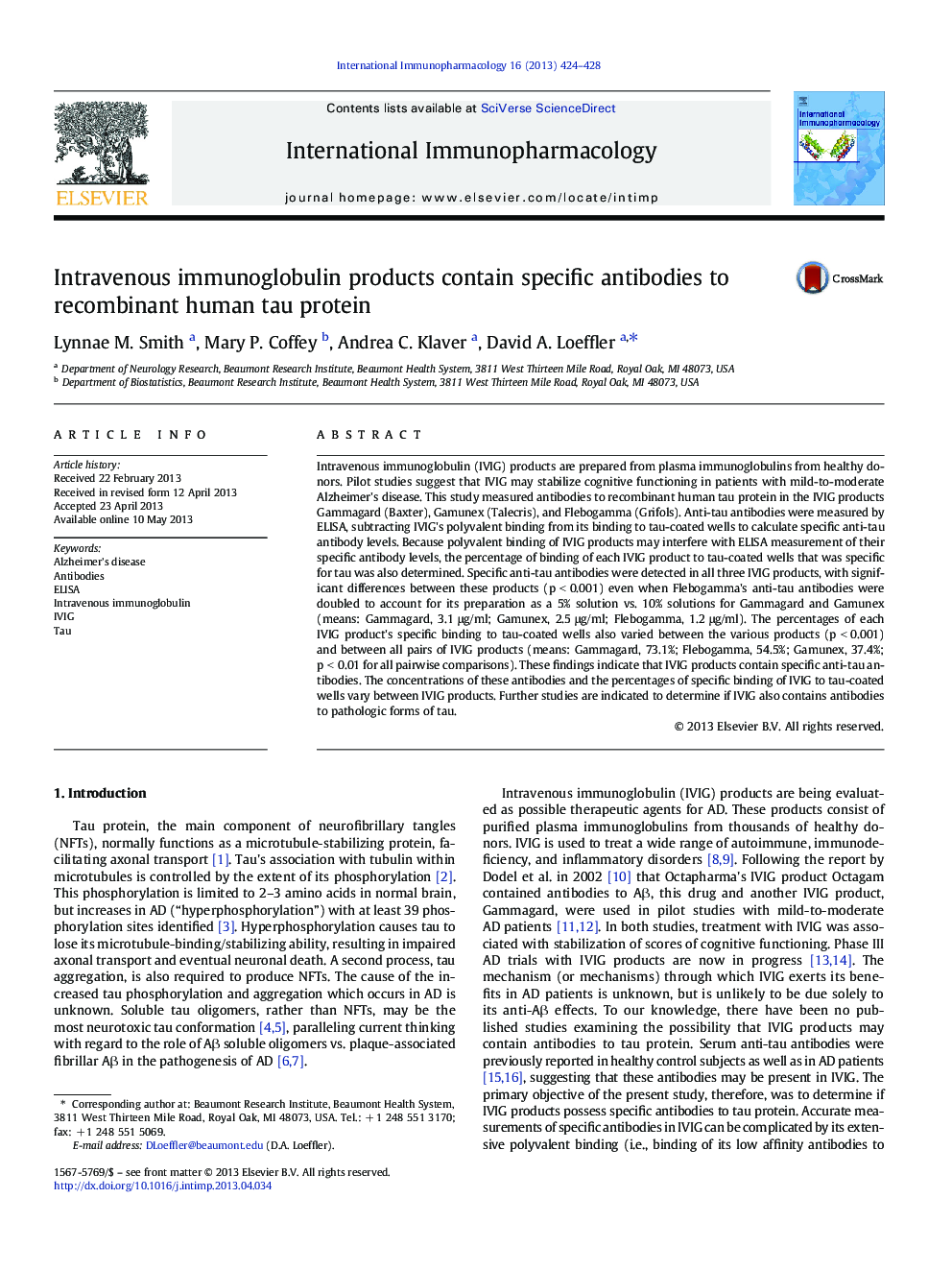| Article ID | Journal | Published Year | Pages | File Type |
|---|---|---|---|---|
| 5833468 | International Immunopharmacology | 2013 | 5 Pages |
â¢Specific antibodies to human recombinant tau are detectable by ELISA in IVIG.â¢Significant differences are present between anti-tau levels in IVIG products.â¢Percent specific binding to tau-coated wells also differs between IVIG products.
Intravenous immunoglobulin (IVIG) products are prepared from plasma immunoglobulins from healthy donors. Pilot studies suggest that IVIG may stabilize cognitive functioning in patients with mild-to-moderate Alzheimer's disease. This study measured antibodies to recombinant human tau protein in the IVIG products Gammagard (Baxter), Gamunex (Talecris), and Flebogamma (Grifols). Anti-tau antibodies were measured by ELISA, subtracting IVIG's polyvalent binding from its binding to tau-coated wells to calculate specific anti-tau antibody levels. Because polyvalent binding of IVIG products may interfere with ELISA measurement of their specific antibody levels, the percentage of binding of each IVIG product to tau-coated wells that was specific for tau was also determined. Specific anti-tau antibodies were detected in all three IVIG products, with significant differences between these products (p < 0.001) even when Flebogamma's anti-tau antibodies were doubled to account for its preparation as a 5% solution vs. 10% solutions for Gammagard and Gamunex (means: Gammagard, 3.1 μg/ml; Gamunex, 2.5 μg/ml; Flebogamma, 1.2 μg/ml). The percentages of each IVIG product's specific binding to tau-coated wells also varied between the various products (p < 0.001) and between all pairs of IVIG products (means: Gammagard, 73.1%; Flebogamma, 54.5%; Gamunex, 37.4%; p < 0.01 for all pairwise comparisons). These findings indicate that IVIG products contain specific anti-tau antibodies. The concentrations of these antibodies and the percentages of specific binding of IVIG to tau-coated wells vary between IVIG products. Further studies are indicated to determine if IVIG also contains antibodies to pathologic forms of tau.
